Peroxisomes and regulation of ROS/RNS signalling (Review)
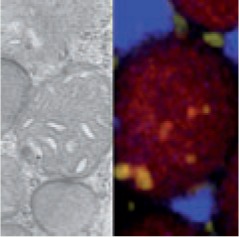
Peroxisomes are very dynamic and metabolically active organelles that used to be regarded as a sink for hydrogen peroxide. Sandalio and Romero-Puertas (pp. 475–485) review the metabolism of reactive oxygen and nitrogen species (ROS and RNS) in peroxisomes and their contribution to the regulation of plant development and acclimation to stress conditions. They highlight that peroxisomes can act not only as a sink of hydrogen peroxide, but also as sources of signalling molecules (ROS and RNS) and as a sensor for ROS/redox changes in the cell, thus triggering specific responses to environmental cues. They conclude that peroxisomes can therefore be regarded as a highly important decision-making platform in the cell where ROS and RNS play a determining role.
Role of redox homeostasis in thermo-tolerance (Review)
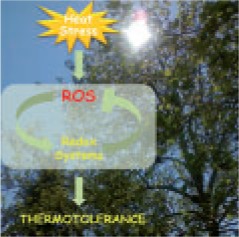
Climate change predictions indicate a progressive increase in average temperatures and an increase in the frequency of heatwaves, which will have a negative impact on crop productivity. de Pinto et al. (pp. 487–496) provide an overview of the redox pathways that contribute to how plants cope with heat stress, focussing on the roles of reactive oxygen species (ROS), redox metabolites and enzymes in the signalling pathways leading to the activation of defence responses. They conclude that although there is clear evidence that several strategies are specifically activated according to the intensity and the duration of heat stress, as well as the capacity of the different species or genotypes to overcome stress, an alteration in redox homeostasis seems to be a common event. Knowledge of thermo-tolerance within agronomic biodiversity is of key importance to enable researchers to identify new strategies for overcoming the impacts of climate change.
Redox markers for drought-induced nodule senescence in soybean
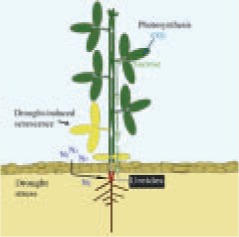
The frequency and severity of drought are predicted to increase as a result of climate change and may have serious effects on crop yields. Marquez-Garcia et al. (pp. 497–510) study the effects of drought in leaves and nodules of soybean (Glycine max) and find that while the physiological impact is perceived throughout the shoot, stress-induced senescence occurs only in the oldest leaf ranks. A number of drought-induced changes in nodule metabolites are observed and transcripts of two peroxiredoxins are identified in nodules as potential markers for stress tolerance. They conclude that stress-induced senescence in the lowest leaf ranks precedes nodule senescence, suggesting that leaves of low photosynthetic capacity are sacrificed in favour of nodule nitrogen metabolism.
Vitamin E, phosphorus availability and longevity in arabidopsis
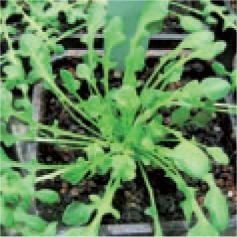
Both plant ageing and phosphorus (P) deficiency can trigger accumulation of reactive oxygen species (ROS), the effects of which can be counteracted by non-polar antioxidants such as vitamin E. Simancas and Munné-Bosch (pp. 511–518) investigate how P availability and vitamin E interact in the control of longevity in Arabidopsis thaliana, and find that plants tend to use vitamin E for a protective, anti-senescing role under moderate or high P levels, but vitamin E paradoxically reduces longevity under severe P starvation. Complex interactions are revealed between P availability, vitamin E and the potential to synthesize jasmonates, suggesting a trade-off between photoprotection and the activation of chemical defences in the plants.
Diurnal changes in algal xanthophyll cycle and H2O2 concentration
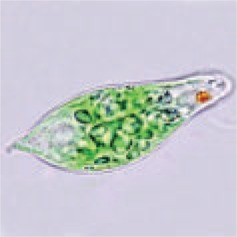
High light activates the xanthophyll cycle and increases the production of reactive oxygen species (ROS), such as hydrogen peroxide (H2O2), but the interrelationships between these parameters is poorly understood. Using a natural freshwater community of algae comprising Euglena species, benthic Navicula diatoms, Chlamydomonas and Chlorella species, Roach et al. (pp. 519–527) demonstrate diurnal variations in H2O2 levels, with a peak at midday. At this point the algae rapidly scavenge H2O2 rather than excreting it. The algal community therefore responds to and influences the concentrations of environmental H2O2. H2O2 levels are low when the xanthophyll cycle is in operation but no relationships between H2O2 levels and non-photochemical quenching are observed. The antioxidant function of the de-epoxidized forms of the xanthophyll pigments is therefore important in the protection of the thylakoid membranes against oxidative damage.
Role of polyphenol oxidase in oxidative stress in leaves
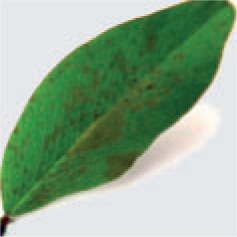
Polyphenol oxidase (PPO) catalyses the oxidation of o-diphenols to o-quinones but its close association with the thylakoid lumen has led to suggestions of a relationship between this enzyme and increased photosynthetic performance. Boeckx et al. (pp. 529–540) subject wild-type red clover (Trifolium pratense) and a low-PPO mutant to either environmental stress (cold and high light) or oxidative stress generated via methyl viologen, and find that PPO activity in leaves does not correspond with a direct role for the enzyme in the regulation or protection of photosynthesis under cold stress. However, more extensive oxidative damage to protein in mutants than wild-types is observed after treatment of attached leaves with methyl viologen, and PPO activity could be associated with an increased capacity to dissipate excess energy, but only at relatively low methyl viologen doses.
Organelle-originated ROS and endoplasmic reticulum responses
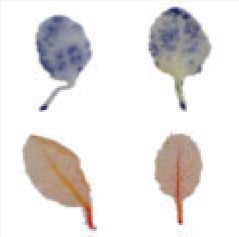
Accumulation of unfolded proteins caused by inefficient chaperone activity in the endoplasmic reticulum (ER) is termed ‘ER stress’, which triggers a response termed the ‘unfolded protein response’ (UPR). Ozgur et al. (pp. 541–553) induce the formation of reactive oxygen species (ROS) in chloroplasts, mitochondria and peroxisomes of Arabidopsis thaliana and find that relatively low concentrations of ROS are more effective for induction of the ER stress response, and that mitochondrial and chloroplastic ROS production have different induction mechanisms for the UPR and ER stress responses. The results suggest that ROS may act as a secondary messenger during ER stress.
Role of AOX1A in optimizing photosynthesis
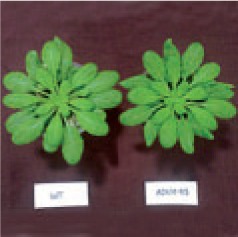
The importance of the alternative oxidase (AOX) pathway, particularly AOX1A, in optimizing photosynthesis during de-etiolation, under elevated CO2, low temperature, high light or combined light and drought stress is well documented. Vishwakarma et al. (pp. 555–569) treat wild-type and aox1a knock-out mutants of Arabidopsis thaliana with antimycin A and find that restriction of the cytochrome c oxidase (COX) pathway in the background of an impaired AOX pathway results in a substantial decrease in respiration, photosynthesis, chloroplastic heat dissipation, ascorbate level and antioxidant systems. This is accompanied by cellular redox imbalance, ROS accumulation and membrane damage. They conclude that AOX1A plays a significant role in sustaining the chloroplastic redox state and energization to optimize photosynthesis by regulating cellular redox homeostasis and ROS generation when electron transport through the COX pathway is disturbed at complex III.
Over-expression of Trxo1 and cell viability under H2O2 stress
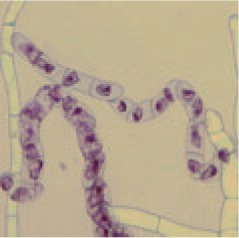
Thioredoxins (Trxs) are ubiquitous small proteins found in different cell compartments and mitochondrial Trxo1 has been related to redox regulation. Ortiz-Espín et al. (pp. 571–582) treat over-expressing PsTrxo1 tobacco (Nicotiana tabacum) BY-2 cells with H2O2 and find a significant delay in cell death compared to controls, which may in part be due to a decreased content of endogenous H2O2 in the over-expressing cells, in which changes in oxidative parameters and antioxidants are less extended after the oxidative treatment. They conclude that PsTrxo1 transformation protects TBY-2 cells from exogenous H2O2, thus increasing their viability via a process in which not only antioxidants but also Trxo1 seem to be involved.
Mitochondrial energy-dissipation systems in plants (Review)
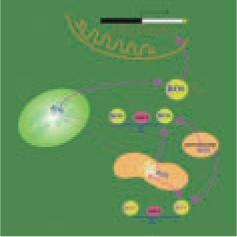
The uncoupling proteins (UCPs), alternative oxidases (AOXs) and proteins involved in the mitochondrial energy-dissipation pathway (MEDP) function to regulate energy utilization and prevent over-reduction of the respiratory electron transport chain. These proteins play crucial roles in the adaption of plants to stress. Pu et al. (pp. 583–600) review current knowledge concerning the role of MEDP members in plant development as well as recent advances in identifying the molecular components that regulate the expression of AOXs and UCPs. The regulation of these MEDP components is complex and occurs at transcriptional, translational, post-translational and metabolic levels. The authors conclude that as a result of its cellular energy mediator functions, the MEDP integrates information from redox and energy signalling pathways with hormonal pathways that regulate plant development and stress tolerance.
Glutathione, ascorbate and cadmium sensitivity in arabidopsis
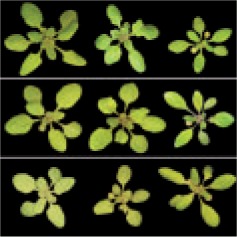
Plants respond to cadmium (Cd) toxicity by increasing their Cd-chelating and antioxidative capacities. Jozefczak et al. (pp. 601–612) study the responses of mutant Arabidopsis thaliana plants deficient in glutathione (GSH) and ascorbate (AsA) when exposed to Cd toxicity and find that GSH and AsA deficiency differentially alter plant GSH homeostasis, resulting in opposite Cd sensitivities relative to wild-type plants. GSH-deficient mutants are hampered in chelation and experience phenotypic disturbances and even more oxidative stress, and therefore activate multiple alternative pathways such as SOD, CAT and APx, indicating a higher Cd sensitivity. Ascorbate deficiency, however, is associated with enhanced synthesis of phytochelatins and GSH in comparison to wild-type plants after Cd exposure, which contributes to decreased sensitivity towards Cd.
Zinc stress and ROS and RNS metabolism of roots
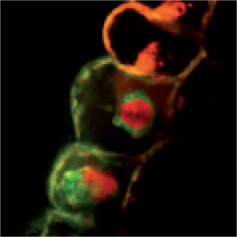
Zinc is an essential micronutrient, but at high concentrations it can damage plants via generation of reactive oxygen and nitrogen species (ROS and RNS). Feigl et al. (pp. 613–625) examine markers of oxidative and nitrosative stress to evaluate the relative sensitivities of Brassica napus (oilseed rape) and B. juncea (Indian mustard) to zinc toxicity. Declines in the primary root length, total root fresh weight and root meristem cell viability of B. napus show it is substantially more sensitive to increasing zinc concentrations than B. juncea. This sensitivity of B. napus is underscored by considerable lipid peroxidation in the roots as well as accumulation of superoxide, which is not seen in B. juncea. By contrast, markers of nitrosative stress do not discriminate the sensitivities of the two species.
Antioxidant metabolism in pepper fruit (Research in Context)

Pepper (Capsicum annuum) contains high levels of antioxidants, such as vitamins A and C and flavonoids. Palma et al. (pp. 627–636) examine the role of antioxidant metabolism of pepper fruit during ripening and in the response to low temperature, paying particular attention to ascorbate, NADPH and the superoxide dismutase enzymatic system. They find that important changes occur at a subcellular level during ripening, particularly in chloroplasts, mitochondria and peroxisomes, but proteomic analysis of the latter two organelles show no changes between the antioxidant metabolism from immature (green) to ripe (red) fruits. Investigation of molecular and enzymatic antioxidants from cell compartments is a useful tool, particularly in the context of expanding the shelf-life of fruit after harvest and in maintaining their nutritional value.
Ripening of pepper fruit and reactive nitrogen species
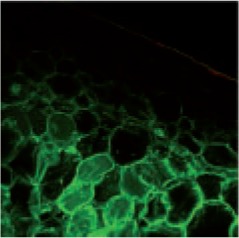
Pepper (Capsicum annuum, Solanaceae) fruits are consumed worldwide and are of great economic importance. Chaki et al. (pp. 637–647) examine the role of reactive nitrogen species (RNS) and find that an enhancement of nitrosothiols and nitroproteins during ripening is reversed by exposure to nitric oxide (NO), which delays the ripening process. A decrease in catalase in red fruit implies a lower capacity to scavenge hydrogen peroxide, thus promoting lipid peroxidation in ripe fruit, and the results suggest that this decrease is due not only to a lower content of catalase but also to its nitration. Thus RNS can mediate post-translational modifications of proteins, which can modulate physiological processes through mechanisms of cellular signalling.
Sodium nitroprusside and ozone in kiwifruit ripening
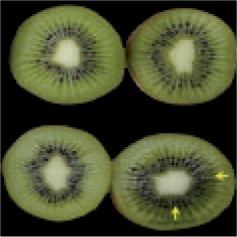
Ethylene is one of the most important ripening-promoting factors for climacteric fruits but its interactions with other signalling pathways have not been fully examined. Tanou et al. (pp. 649–662) study the ripening of kwifruit (Actinidia deliciosa) and find that ozone treatment markedly delays fruit softening and depresses the ethylene biosynthetic mechanism. Pretreatment with sodium nitroprusside (SNP) attenuates the ozone-induced inhibition of ripening and proteomic analysis shows a considerable overlap between proteins affected by both SNP and ozone. The results demonstrate that ozone-induced inhibition of ripening could be reversed by SNP and provides insights into the interactions between oxidative and nitrosative signalling in climacteric fruit ripening.
Dual role of reactive oxygen species in seed physiology (Review)
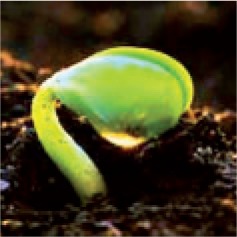
Reactive oxygen species (ROS) are considered to play dual functions in seed physiology. Recent studies have demonstrated that ROS have key roles in seed germination, particularly in the release of seed dormancy and embryogenesis as well as in protection from pathogens. Jeevan Kumar et al. (pp. 663–668) review the dual functions of ROS in seed physiology, and consider that a greater understanding of the functions of ROS in the processes that determine seed longevity and seed ageing is required because seed deterioration may be caused by pathways other than the accumulation of oxidative damage that lead to programmed cell death. Conversely, the beneficial effects of ROS have generated increasing interest because of their functions in the regulation of cellular redox state, and their putative roles in the control of seed dormancy, seed germination and in mediating phytohormone cross-talk.
Redox changes, dormancy breaking and ageing of seeds
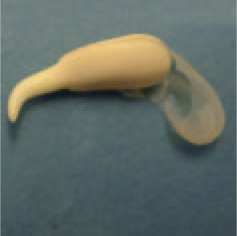
Loss of seed viability has been associated with deteriorative processes that are partly caused by oxidative damage, and dormancy breaking has also been associated with oxidative processes. Morscher et al. (pp. 669–678) study antioxidant profiles in fresh (dormant) or after-ripened (non-dormant) sunflower (Helianthus annuus) embryos subjected to controlled deterioration under ambient or elevated O2, and find that dormancy breaking and viability loss correlate with significant oxidation of the cellular redox environment, assessed via glutathione redox state, changes in antioxidant enzyme activities and protein carbonylation. On the other hand, the lipid environment remains rather stable, even in dead seeds. High O2 concentrations accelerate dormancy alleviation, but surprisingly do not accelerate the rate of viability loss.
Regulation of ROS and RNS in pepper seedlings
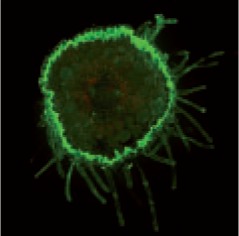
Reactive oxygen species (ROS) and reactive nitrogen species (RNS) are secondary messengers in the regulation of developmental processes. Airaki et al. (pp. 679–693) report the differential regulation of ROS and NO metabolism, and of NADP-dehydrogenases, in the different organs of pepper (Capsicum annuum) seedlings during development in the absence of stress. These data show that ROS and RNS metabolism contributes to the regulation of seedling development through interactions in a range of metabolic pathways. The temporal and spatial regulation of H2O2 and NO accumulation is important in this signalling hub, contributing to the overall success of seedling establishment.
Auxin, thioredoxin reductase, denitrosylation and root growth
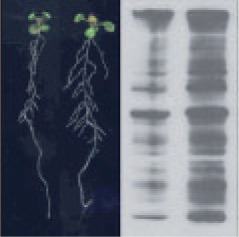
Auxin is the main plant morphogen controlling root growth and development. Correa-Aragunde et al. (pp. 695–702) grow seedlings of Arabidopsis thaliana treated with auxin with or without thioredoxin reductase (NTR) inhibitors and find that auxin and nitric oxide (NO) induce the activation of NADPH-dependent NTR, and that this activity is required for root growth responses. Auxin promotes protein denitrosylation in the roots, while NTR inhibitors increase protein S-nitrosylation and disrupt the normal root growth pattern. Accordingly, the level of S-nitrosylated proteins is higher in the ntra ntrb double mutant as compared to the wild-type. The fact that high NO concentration induces NTR activity suggests that a feedback mechanism to control massive and unregulated protein S-nitrosylation could be operating in plant cells.
Vascular patterning of superoxide in bursting grapevine buds
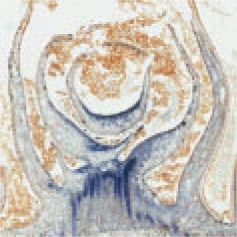
Bud burst is a critical time for the reproductive fate of many perennial plant species, but it is difficult to predict as there are no visible markers of the preceding dormant state. Meitha et al. (pp 703–711) investigate tissue oxygen and redox patterning during bud burst in grapevene (Vitis vinifera), and find that the latent bud complex is hypoxic (<5 kPa pO2) and that superoxide shifts from the apical meristem to the provascular tissue during bud burst. They conclude that spatial and temporal control of the tissue oxygen environment occurs within quiescent buds, and the transition from quiescence to bud burst is accompanied by a regulated relaxation of the hypoxic state and accumulation of reactive oxygen species (ROS) within the developing cambium and vascular tissues of the heterotrophic grapevine buds.
Regulation of peroxidase and molecular functions of 2-Cys PrxA

The 2-Cys Prx A protein of Arabidopsis thaliana performs the dual functions of being a peroxidase and a molecular chaperone depending on its conformation and the metabolic conditions. Lee et al. (pp. 713–725) generate mutants of 2-Cys Prx A by substituting serine (Ser) with cysteine (Cys) at different locations through site-directed mutagenesis and find that substitution of Ser150 to Cys150 remarkably improves the holdase chaperone and peroxidase activities due to conformational changes. Molecular modelling confirms the relationship between the mutation positions and switching of 2-Cys Prx A activity. If confirmed in planta, this leads to the potential for the substitution to be used to maximize the functional utility of the 2-Cys Prx A protein for improved metabolic functions and stress resistance in plants.


